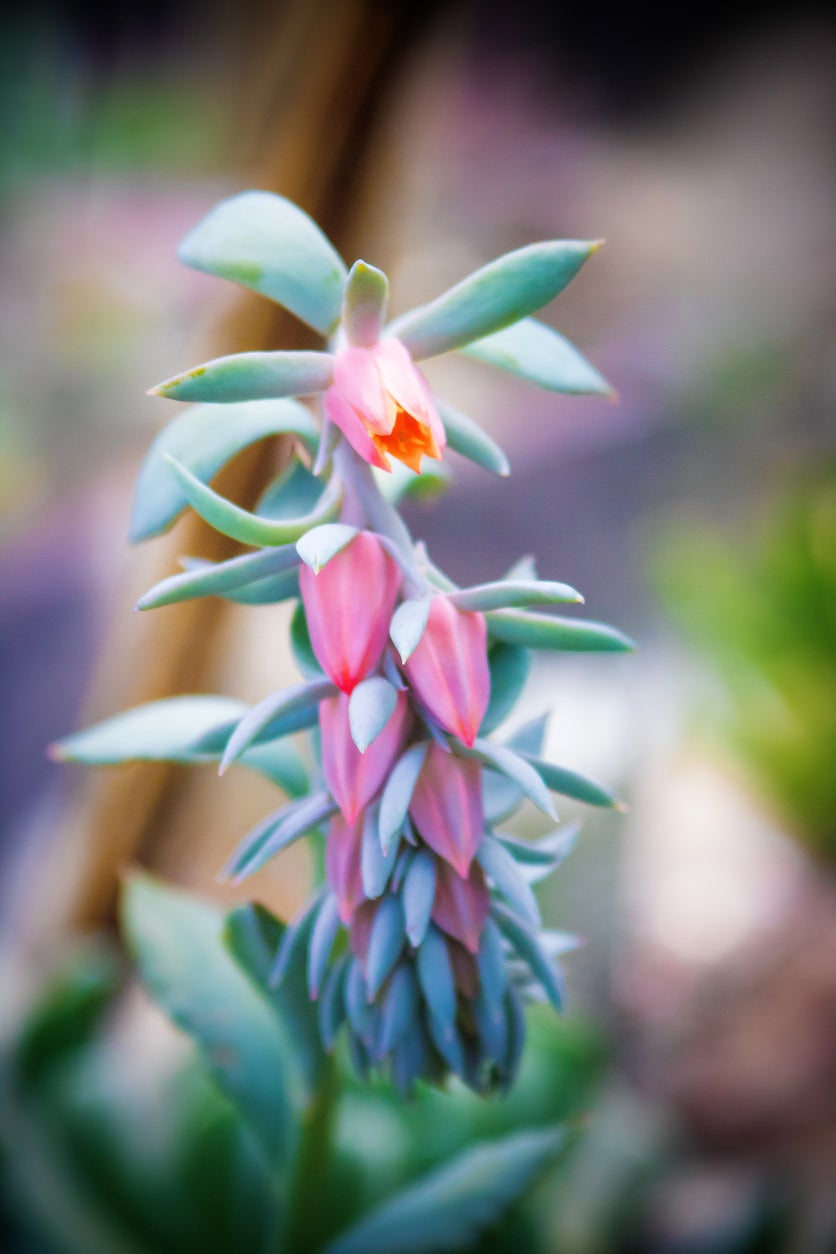When Do Succulents Bloom: Learn About Flowering Succulent Care


Most of us grow our cacti and succulent plants for the attractive and unusual foliage. Flowers on a succulent are a special surprise. All succulent plants and cacti have the capability to bloom at some point, but location and conditions have to be just right. If a bloom stalk or bud appears, you’ll likely exclaim “My succulent is flowering!” Proceed in the right way to get the most beautiful, long-lasting bloom. Read on for tips to help with caring for flowers on a succulent plant.
Blooming Succulent Plant Care
When your bloom stalk or flower begins to develop, keep an eye out for aphids buzzing around it. They are particularly attracted to this type of new growth. Spray them with a 50% to 70% alcohol product or a horticulture soap. Some succulent growers remove the stalk at this time for this reason. If your intriguing bloom leads you to provide extra care, follow some or all of these tips: Succulent and cacti flowers love sunlight, so the more you can gradually provide will make the flower bloom more quickly. Be cautious when temperatures are in the high 80’s and 90’s, though, as some succulent plants can’t take extremely high heat. As always, it is best to know your succulent plant and research details about its bloom and how much heat it likes. Since most plants in this category bloom in late spring to early summer, high heat is not always an issue. Blooms tend to last longer in dry climates. When you see a bloom stalk or flower developing on your plant, begin adding an hour more sun each day, if possible. Gradually add more until it is in full sun all day. If you grow your plants indoors, find the brightest, sunniest window and acclimate them there. Keep a check that leaves and pads don’t burn. Flowering succulent care involves extra water and fertilization, according to some expert info. Drench the blooming succulent plant when you water. Water again when the top two inches (5 cm.) of soil is dry. Continue this watering schedule until the blooms fade. Instead of fertilizing once a season, step up your fertilization to monthly. Use a high phosphorus fertilizer, the middle number on the three-digit fertilizer ratio. Also, increase the feeding up to half-strength instead of one-quarter. Continue feeding until the blossom begins dying off. All these are potential care tips that can make your flower bloom earlier and last longer. Or you can do nothing to the plant that is blooming and let nature take its course. As with the growth of these fascinating plants, flowers also sometimes thrive on neglect. If you want to attempt growing more plants via seed, collect fading blooms and place in a small paper bag. After flowers dry up, you will find tiny seeds.
When Do Succulents Bloom?
Bloom time varies in succulent plants. Most echeverias bloom in late spring to early summer but are known to blossom in fall as well. Aloe vera typically blooms in summer, but can certainly blossom at other times of the year - several blossom in autumn and winter. Jade, kalanchoe, rhipsalis, and some hoya also bloom in autumn and winter. Sadly, some succulents are monocarpic and exist only to flower one time. Cold-hardy sempervivum and the beautiful aeonium, for instance, die after producing their first bloom. Before flowering, though, they’ll produce babies that continue their line. Most cacti and succulents bloom the first time at the age of four to six years. Others may bloom at a younger age.
Sign up for the Gardening Know How newsletter today and receive a free copy of our e-book "How to Grow Delicious Tomatoes".

Becca Badgett was a regular contributor to Gardening Know How for ten years. Co-author of the book How to Grow an EMERGENCY Garden, Becca specializes in succulent and cactus gardening.